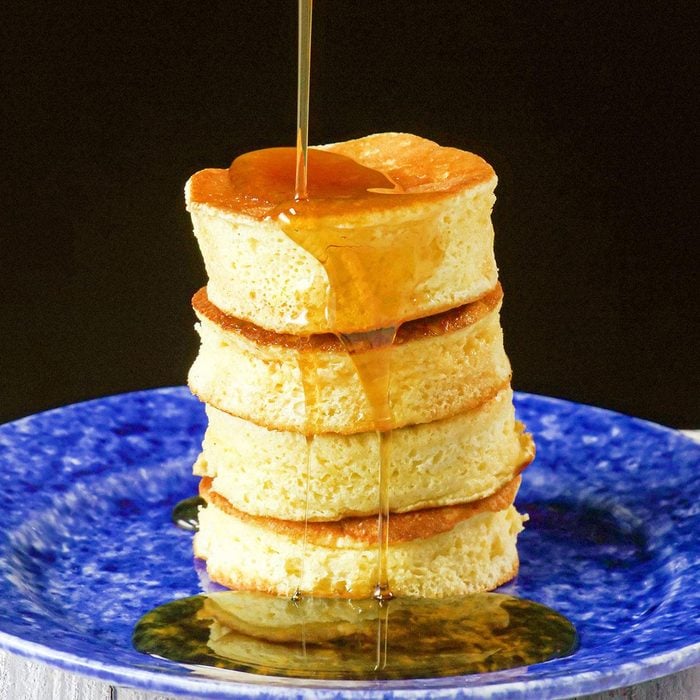Japanese pancakes aren’t just a trendy brunch item: They’re decadent and rich enough to serve as a mouthwatering dessert or a snack to satisfy your sweet tooth. These tall, fluffy treats taste like buttermilk pancakes fused with vanilla cupcakes and baked custard. And they’re light enough to make you feel like you’re biting into a cloud.
Luckily, an overseas trip isn’t required to try this famous Japanese recipe. Anyone can learn how to make it at home with our Test Kitchen’s essential tips and tricks. No translation errors involved!
What are Japanese pancakes?
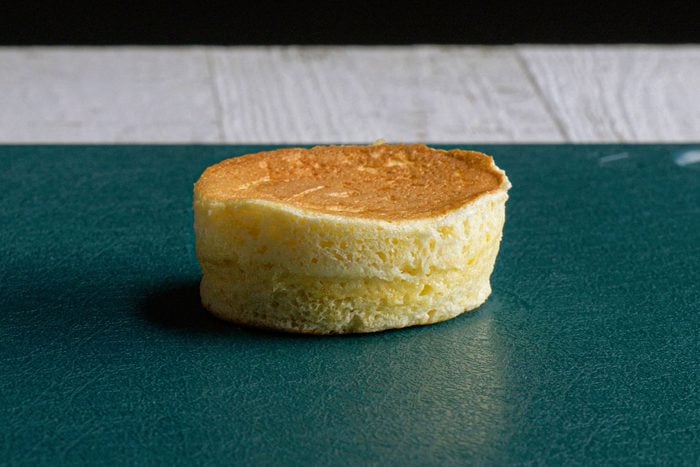
Japanese pancakes (aka “Japanese souffle pancakes”) contain many of the same ingredients as traditional pancakes, but they’re distinguished by their height and custard-like flavor. There’s one important step which requires a bit of patience: whipping the egg whites. Building a meringue provides airy structure to the batter, giving the fluffy pancakes a part-pancake, part-souffle texture.
Japanese Pancakes Ingredients
- Eggs: Whipping egg whites creates air bubbles that make these pancakes extra fluffy. It’s easier to separate the egg whites when the eggs are cold, but the whites beat more readily when they’re at room temperature. So leave yourself enough time to let them stand.
- All-purpose flour: You don’t need special flour to make Japanese pancakes. All-purpose flour gives pancakes their structure. After measuring it, sift the flour to remove any lumps.
- Sugar: In addition to adding sweet flavor, sugar contributes to the pancake’s soft texture.
- Milk: Milk adds moisture to the pancakes, and the natural sugars help the batter brown evenly.
- Baking powder: Baking powder releases gas as the pancakes cook and helps the batter expand.
Directions
Step 1: Separate egg yolks and whites
Separate the egg whites from the yolks. Place the egg whites in a large bowl, and let stand at room temperature 30 minutes.
Test Kitchen Tip: Be sure that the egg whites are free of any traces of egg yolk. The presence of fat from the yolks will prevent the whites from whipping properly.
Step 2: Prepare the meringue
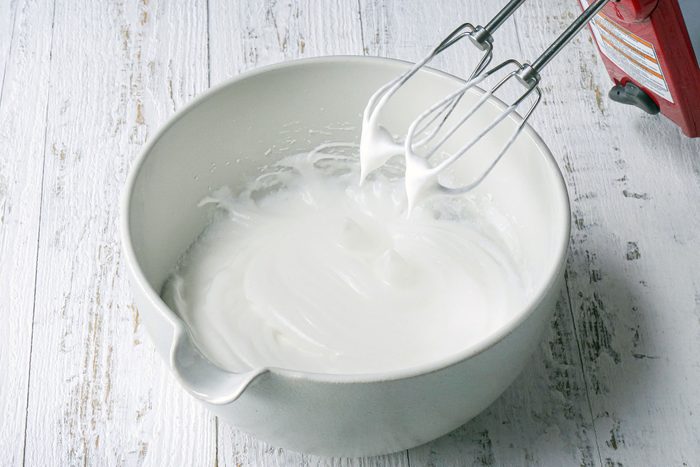
Beat the egg whites on medium speed until foamy. Gradually add the sugar, 1 tablespoon at a time, beating on high after each addition until the sugar is dissolved. Continue beating until stiff glossy peaks form.
Test Kitchen Tip: You’ll know it’s time to add the sugar when the egg whites reach soft peaks. They’ll look shiny and doubled in size. When you lift the whisk, the tip will fall over.
Step 3: Make the flour mixture
In another large bowl, beat the egg yolks until slightly thickened. Stir in the milk and vanilla.
In a third bowl, combine the flour and baking powder. Gradually beat this dry mixture into the egg yolk mixture.
Step 4: Fold the flour mixture into the meringue
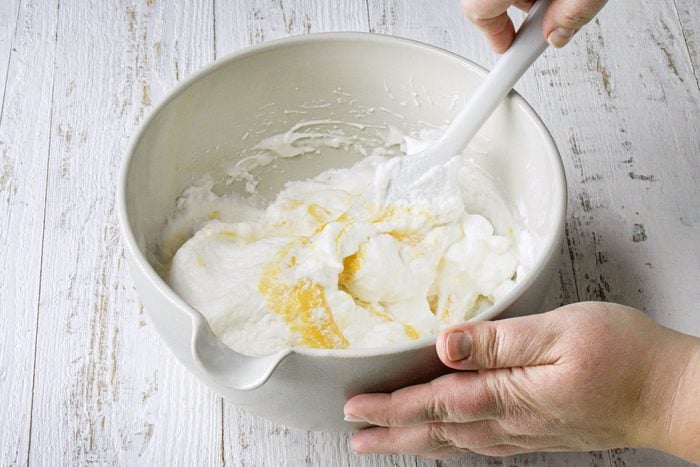
Gently fold half of the flour mixture into the meringue. Then, gently fold in the remaining flour mixture.
Test Kitchen Tip: Folding the ingredients is an essential step to creating fluffy pancakes. You don’t want to deflate the meringue and lose the air you’ve built up.
Step 5: Cook the pancakes over low heat
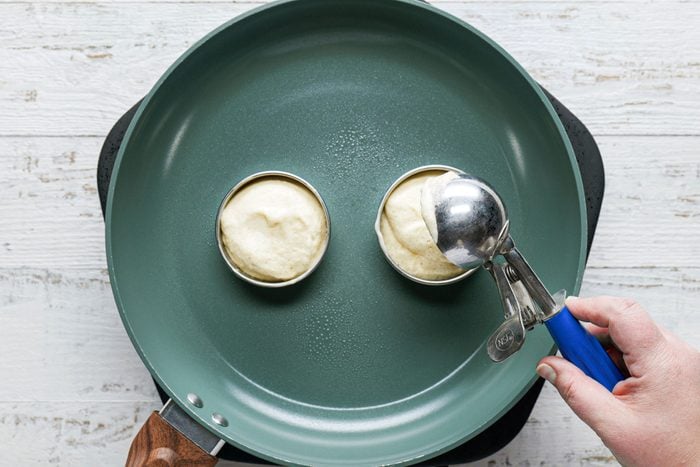
Grease 3-inch ring molds, and set aside. Then, preheat a greased large nonstick pan over low heat. Use the lowest heat setting on your stovetop or griddle. If the heat is too high, the pancakes will burn on the outside before they cook through.
Place the greased ring molds into the pan, and fill them 3/4 full with the batter. Cook until the tops begin to rise and the bottoms are browned, about two minutes.
Test Kitchen Tip: A cookie scoop makes it easy to fill the rings in one fell swoop.
Step 6: Flip the pancakes
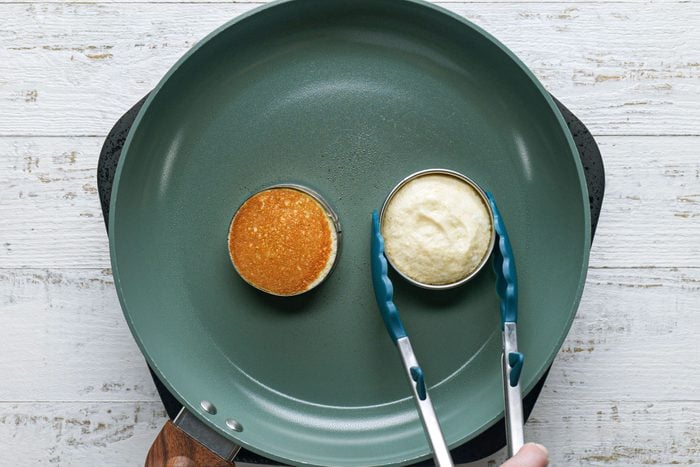
Flip carefully, and cook until the second side is golden brown, about one to two minutes longer. Remove the finished pancakes from the molds and keep warm. Repeat the process with the remaining batter.
Test Kitchen Tip: If you greased the rings, the pancakes shouldn’t stick. But the batter expands as it cooks, so it becomes a tight fit. Use the back of a spoon to gently coax the pancakes out of the mold. If needed, run a cake tester around the inside edge of the mold to release the pancakes.
Step 7: Serve
Serve immediately with toppings, if desired.
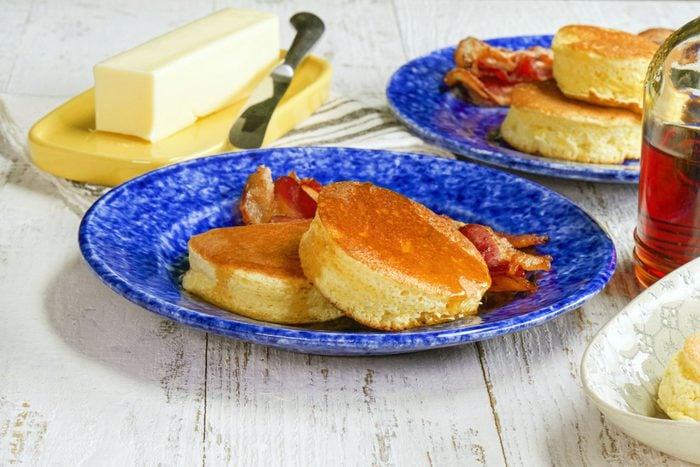
Japanese Pancake Variations
- Use a pancake mix: You can use pre-made pancake mix—if you buy the right mix. Japanese grocery stores sell the mix Morinaga, which is as easy to use as American pancake mix. Just add egg and milk, and stir. The pancakes won’t be as lofty but they’ll still have a fluffy texture and delicate sweetness.
- Change the flavor: Make matcha pancakes by adding 2 teaspoons of high-grade matcha powder during the flour and baking soda step. Or, for lemon-flavored pancakes, add 1/4 cup of lemon or yuzu juice and 1 teaspoon of lemon zest to the egg yolk mixture.
- Add berries: In the summer, take advantage of seasonal berries and top the pancakes with fresh strawberries, blueberries or blackberries. In the winter months, make a delicious compote by cooking 1 cup of frozen berries with 1/4 cup of sugar in a small pot on medium low heat for 15 to 20 minutes, until the berries have reduced and thickened slightly.
- Have fun with toppings: You can keep it simple with maple syrup, or top Japanese pancakes with any of your favorite pancake toppings, like powdered sugar, toasted nuts or whipped cream.
How to Store Japanese Pancakes
Japanese fluffy pancakes taste best just after you cook them. You can store the leftovers in an airtight container in the refrigerator for up to three days. However, they will deflate and lose their puffed-up texture.
Japanese Pancakes Tips
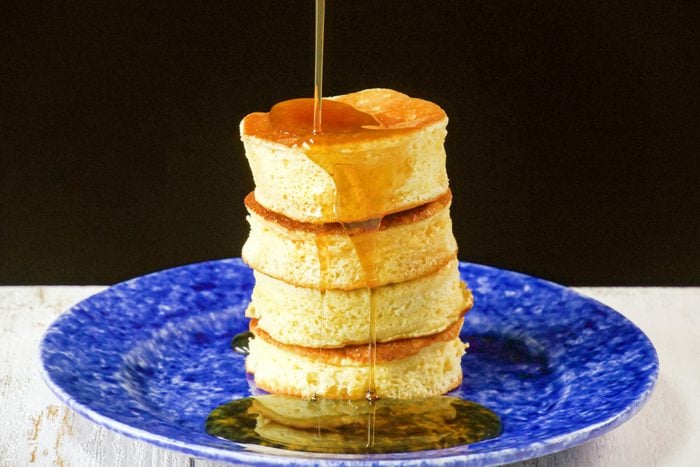
Do I need any special tools to make Japanese pancakes?
Some Japanese pancake recipes don’t use a mold, but our Test Kitchen recommends using a ring to create these tall, perfectly formed pancakes. It’s also helpful to use a hand mixer or stand mixer to whip the meringue. You can do it by hand with a whisk, but it’ll be quite the workout! Finally, you’ll need a large nonstick pan or an electric griddle to cook the pancakes.
Why did my Japanese pancakes deflate?
It’s natural for Japanese pancakes to deflate, just as a quiche, Dutch baby pancake or chocolate souffle deflates slightly when removed from the oven. However, the best way to prevent deflated pancakes is to whip your egg whites to stiff peaks, being sure to not under- or overbeat them. Pancakes can also deflate if they aren’t fully cooked. The middle must be cooked through so there’s enough structure to the batter.
Why are my pancakes flat instead of light and airy?
Improperly whipped egg whites are the main culprit for flat pancakes. Be careful when cracking and separating the eggs. There should be no trace of egg yolk in the whites. The presence of the fat can prevent the proteins in the whites from fluffing up. It’s also important to measure flour the right way by spooning the flour into the measuring cup, then leveling off the top. Too much flour can weigh down the pancakes. Finally, you might need to test your baking powder. If it’s expired, the pancakes won’t rise.
